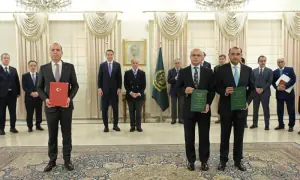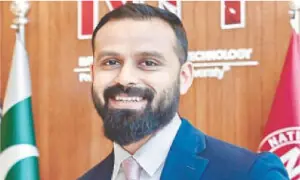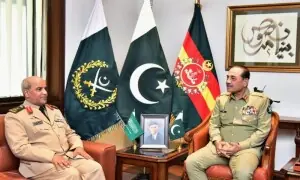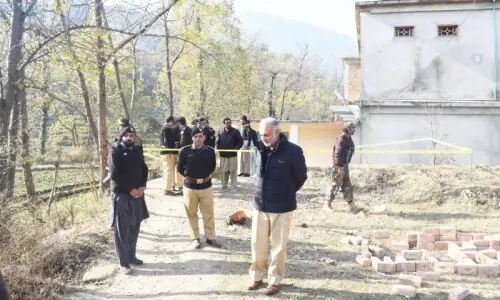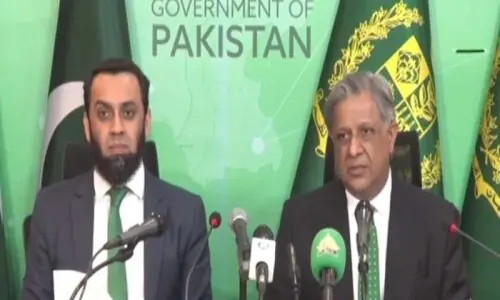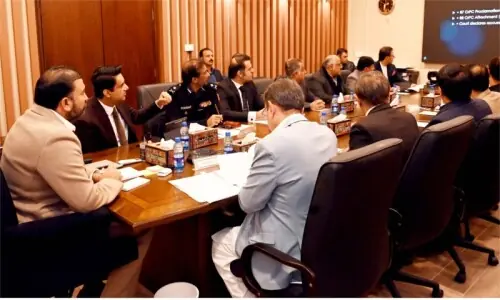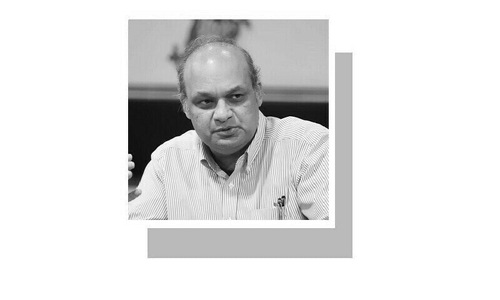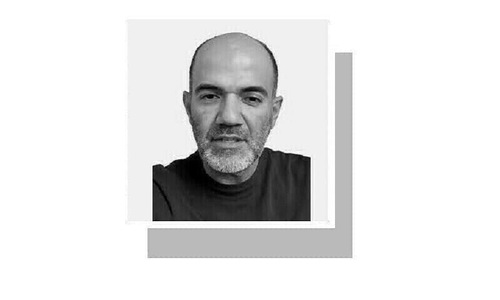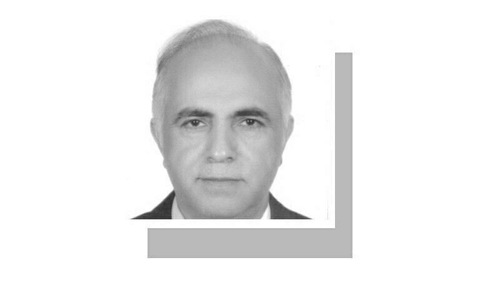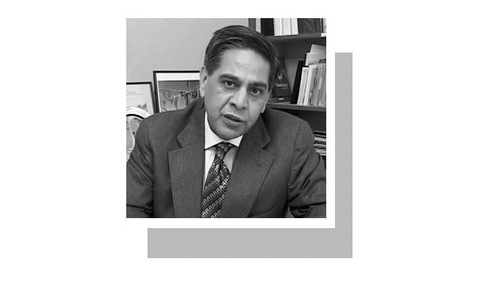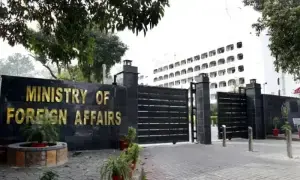
• WB formally launches decade-long Country Partnership Framework
• Says it is ‘ambitious in taking risks’ for long-term plan
ISLAMABAD: Prime Minister Shehbaz Sharif on Thursday hailed the $20 billion Country Partnership Framework (CPF) as a landmark initiative, even as a World Bank official acknowledged they were ‘taking a risk’ by offering Pakistan the unusual decade-long partnership.
Addressing the launch ceremony of the decade-long CPF, the prime minister described it as a transformative partnership marking the longest development collaboration between Pakistan and the Bank, forged through years of strategic cooperation to promote employment opportunities, IT-led development and climate resilience while ensuring economic stability..
He emphasised that the framework aims to address Pakistan’s pressing economic and developmental challenges while fostering growth, resilience and technological progress.
The prime minister commended the World Bank for its support through pivotal projects, including hydropower, water management and economic reforms. He expressed gratitude to the World Bank team for their leadership in shaping the framework, calling it a timely intervention to help Pakistan overcome immense challenges.
Highlighting progress in digitising the Federal Board of Revenue (FBR), PM Shehbaz announced a pilot project at Karachi Port aimed at curbing corruption by reducing collusion between importers and customs officials. The initiative involves faceless interactions to enhance inland revenue collection.
“These funds will be channelled into social protection projects for Pakistan’s most vulnerable populations,” he explained.
PM Shehbaz assured the government’s all-out commitment to implementing the CPF, urging unity among politicians, experts and bureaucrats to achieve the framework’s ambitious targets.
‘High risks’
Speaking at the launch event, World Bank Country Director Najy Benhassine acknowledged the high risks involved in the decade-long partnership, which includes an indicative $20bn plan. He noted that sector-wise allocations, output targets and implementation strategies would require further consultations.
“We are ambitious in taking risks,” Mr Benhassine said, urging other development partners to join efforts to address Pakistan’s vast developmental needs. He added that the framework’s success depends on structural and policy reforms and would involve course corrections to address shortcomings and adapt to changing circumstances.
World Bank Vice President for South Asia, Martin Raiser, highlighted Pakistan’s pivotal moment, with macroeconomic stabilisation taking hold and the recent launch of the National Economic Transformation Plan, Uraan Pakistan. He described the CPF as a timely and strategic collaboration designed to complement government efforts while addressing critical challenges.
The CPF outlines six key outcomes with ambitious 10-year targets, including reducing child stunting, addressing learning poverty, enhancing climate resilience, transitioning to cleaner energy, and improving air quality.
“This document will indeed serve as a long-term anchor for our joint commitment to address key country development needs, in alignment with the government’s priorities, and for the benefit of the people of Pakistan,” Mr Raiser said.
However, he stressed that the World Bank resources will not be enough to reach these joint ambitions. “The CPF approach aims to crowd in much-needed private capital in underinvested parts of the economy, including with the support of our private sector arms, the International Finance Corporation (IFC) and the Multilateral Investment Guarantee Agency (MIGA),” he said. “Unlocking private investment in priority sectors will require a mix of public and private sector solutions and enabling policy reforms.”
He emphasised that besides the CPF, other partnerships would be critical because more resources would be needed to have an impact at scale, which would require close collaboration with other multilateral and bilateral development partners of Pakistan.
By fostering alignment and leveraging joint programmes, the new CPF aims to ensure that efforts are harmonised and resources are utilised efficiently and based on each other’s comparative advantages.
“We can step back in sectors where other partners or the private sector, including IFC, can take the lead,” he said. “Focus, leverage and long-term approach anchored on tangible targets: this is a shift in the way we engage with Pakistan. It reflects a broader change in the World Bank’s new country engagement model and Pakistan is a pioneer in this approach.”
Challenges, opportunities
Responding to questions about political considerations, Mr Benhassine said the CPF’s focus on key areas — such as climate resilience, private investment and fiscal reforms — was widely supported across political and social segments.
“Some of them wanted additions here and there but focus (on selected areas) was shared,” he said, adding that a 10-year plan was precisely meant to ensure steady efforts and make adjustments accordingly.
He agreed that macroeconomic targets used in the five-year Uraan Pakistan plan and the CPF might vary but explained that the World Bank’s table was also indicative, and the bank issued macroeconomic indicators twice a year in October and April for the respective fiscal year.
The IFC country manager for Pakistan and Afghanistan, Zeeshan Sheikh, highlighted the required investment scale, estimating $250-350bn for climate action alone during the CPF period.
Mr Sheikh noted that leveraging private sector investment alongside World Bank resources would be critical for achieving developmental goals.
Mr Benhassine said the CPF would be subjected to a Performance and Learning Review (PLR) in the fiscal year 2030 and maybe even before if needed and is anchored around six outcomes focused on Pakistan’s most critical development needs.
He said digital connectivity and financial inclusion were central to many of the targeted outcomes, but he sidestepped a question if the authorities also shared its enabling importance as interruptions to digital and internet services were being caused by the authorities.
“Digital is 100 per cent enabler and facilitator for development, with immense potential to improve quality of services,” he said.
With input from APP
Published in Dawn, January 24th, 2025






